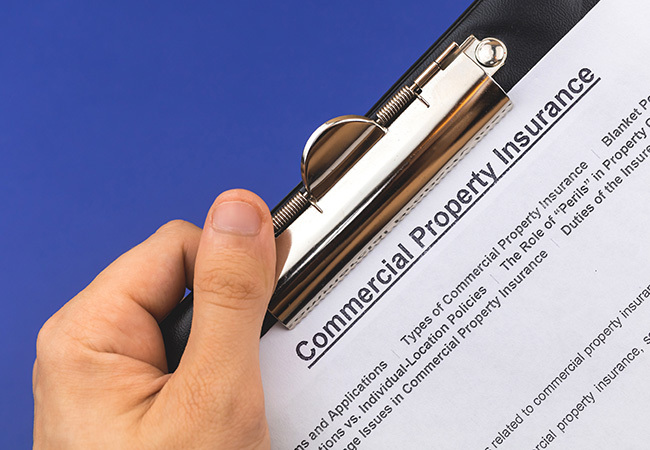Commercial property insurance in California protects your physical business assets. While California state law doesn’t universally require all businesses to have commercial property insurance, it’s frequently mandated for lease or loan agreements. In wildfire or earthquake zones, many traditional insurers may indeed restrict or decline coverage. That’s where the California FAIR Plan commercial insurance can become a critical option.
This guide covers what every business owner must know—from regulatory oversight and claims processes to cost factors and local risk exposure.
Who Needs This Coverage?
Though California state law doesn’t impose a universal mandate for commercial property insurance on all businesses, most still need it to meet contractual obligations. If you’re in a wildfire-prone or high-risk earthquake zone, traditional carriers might limit or decline your application, making the California FAIR Plan a crucial alternative.
You likely need California commercial property insurance if you:
- Lease a storefront, office, or warehouse: Landlords typically require property insurance to protect their leased premises and your business’s contents within it.
- Own equipment, furniture, or inventory: These tangible assets represent significant investments that require protection from various perils.
- Operate in industries with high physical asset exposure: Industries like healthcare, manufacturing, or construction rely heavily on expensive equipment and specialized facilities.
- Are located in wildfire zones: Many admitted insurers have become increasingly selective or have withdrawn from certain high-risk areas, making the FAIR Plan a “last resort” option.
California state law requires all employers with at least one employee to carry workers’ compensation insurance. Sole proprietors must provide coverage for any employees they hire but are not required to cover themselves.
Industry-specific needs include construction firms needing builder’s risk coverage for projects, healthcare providers requiring coverage for high-value diagnostic machines, and agricultural businesses protecting crop storage and irrigation systems.
Failing to maintain required coverage can result in contract violations, financial penalties, and significant legal risks—especially if damage occurs during an uninsured period.
To fully protect your business, make sure you’re familiar with the 5 essential types of insurance most small businesses need.
What Coverage Includes (and Why It Matters)
Most business property coverage California policies include several layers of protection:
- Building Coverage: Pays for repairs or rebuilding of your owned commercial structure after damage from covered perils like fire, wind, vandalism, or civil commotion.
- Contents Coverage: Covers your business personal property, including items like tools, inventory, office furniture, electronics, and machinery located inside your space.
- Business Interruption Insurance CA (also known as Business Income): Replaces lost income and helps cover continuing overhead costs (e.g., rent, payroll) during the period your business is shut down or significantly impacted due to covered property damage.
- Inland Marine: A flexible coverage that protects specific types of property that are movable or that are otherwise excluded from standard property policies. This is critical for contractors’ tools and equipment while in transit or at various job sites, and for mobile service providers.
- Earthquake Insurance for Businesses: This is an essential endorsement in California, as standard commercial property policies exclude earthquake damage. It must be purchased separately.
Ordinance or Law Coverage (Code Compliance Add-ons): An important endorsement that pays for the increased costs of repair or reconstruction required to comply with updated building codes or ordinances after a covered loss.
Common Claims and Risks in California
Commercial property claims California business owners file most often relate to environmental and urban risks:
- Wildfires: Embers can ignite structures rapidly, and direct flames can lead to total losses, as seen in tragic events like the Camp Fire in Paradise. Even smoke and ash damage can be costly.
- Earthquakes: California sits on active fault lines like San Andreas. Earthquake damage, including structural issues and related fires, can impact large areas. As noted, most policies require a separate earthquake insurance for businesses endorsement.
- Water Damage: Can stem from aging plumbing systems, burst pipes, or roof leaks, leading to significant interior flooding. Multi-story office buildings are particularly vulnerable to extensive damage affecting multiple floors.
- Vandalism/Theft: Densely populated urban areas like San Francisco or downtown Los Angeles experience increasing storefront break-ins and property damage, requiring comprehensive coverage to protect against theft losses and repair costs.
Without adequate coverage, businesses would face significant out-of-pocket expenses during what could be months of lost business revenue and expensive repairs, potentially leading to permanent closure.
California Commercial Property Cost Factors
Price Drivers:
- Proximity to wildfire or quake zones: This is a major factor, with properties in higher hazard areas facing substantially higher rates or limited options.
- Building age and construction materials: Older buildings, particularly those of wood-frame construction, may have higher fire risks and could cost more to insure.
- Business type: High-risk operations (e.g., restaurants with cooking equipment, hospitals with sensitive machinery, manufacturers) generally pay more than lower-risk businesses (e.g., law firms, accounting offices).
- Fire suppression or security systems: Installing sprinklers, alarms, or surveillance systems can often lead to premium discounts.
- Coverage limits and deductibles: Higher coverage amounts increase premiums, while higher deductibles generally lower them.
Make sure to compare quotes carefully—policies may look similar but can vary significantly in exclusions (like flood) or crucial add-ons (like ordinance or law coverage).
Claims Process & Legal Rules to Know
California enforces strict California property insurance regulations that protect business owners during the claims process, primarily governed by the Fair Claims Settlement Practices Regulations (California Code of Regulations, Title 10, Section 2695 et seq.)
Insurers must follow clear guidelines to ensure timely and fair resolutions:
- Acknowledge receipt of your claim: Insurers must acknowledge receipt of your claim within 15 calendar days of notification and provide necessary forms and instructions.
- Accept or deny the claim: Insurers must accept or deny a claim (in whole or in part) within 40 calendar days after receiving your proof of claim. If more time is needed for investigation, they must provide written notice explaining the reasons and update you every 30 days thereafter.
- Issue payment: If a claim is accepted, the insurer must tender payment for the undisputed portion of the claim immediately, but no later than 30 calendar days after acceptance of the claim and receipt of a properly executed release (if needed).
To comply and facilitate a smooth claims process, you’ll need to:
- Notify your insurer promptly: Delays in reporting a claim can potentially impact your coverage or the investigation process.
- Document damages thoroughly: Take extensive photos and videos, gather all relevant invoices, receipts, and written statements related to the loss.
- Complete and submit the proof-of-loss form: This form, typically provided by the insurer within 15 calendar days of claim acknowledgment, details your losses.
- Cooperate with inspections: Allow adjusters reasonable access to inspect the damaged property.
If a dispute arises, the California Department of Insurance (CDI) offers various resources, including consumer complaint assistance, mediation, and arbitration support, to help businesses resolve issues without lengthy and costly litigation.
Bottom Line: Secure the Coverage You Need
If you operate a physical location—whether it’s a bakery, clinic, warehouse, or auto shop—California commercial property insurance is your essential safety net.
Here’s what to do now:
- Review all lease and financing contracts—they likely specify required coverage types and limits.
- Seriously consider earthquake or flood endorsements depending on your business’s specific location and vulnerability.
- Create a detailed inventory and photograph all major assets and contents to streamline any future claims process.
- Compare options from traditional admitted carriers and understand the offerings and limitations of the California FAIR Plan.
Need help figuring out your best option? Call our licensed team at 855-718-7552






